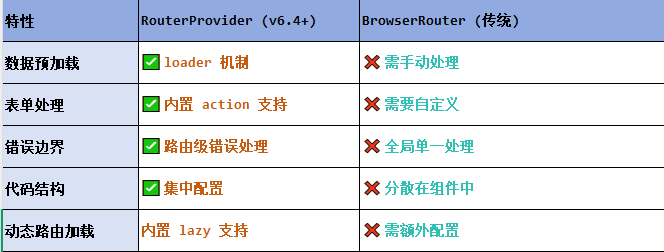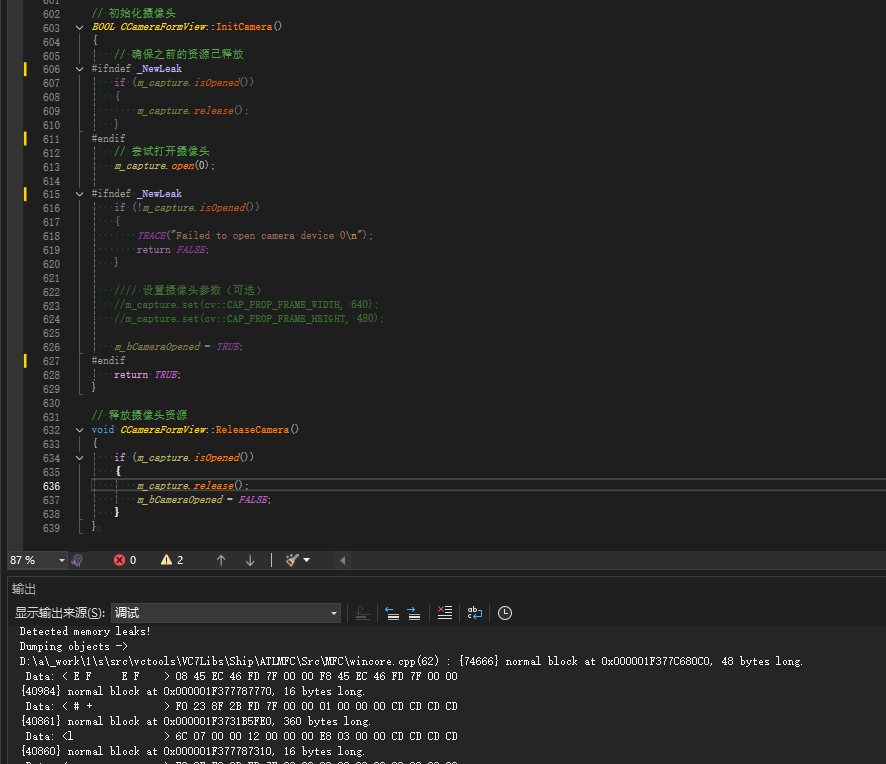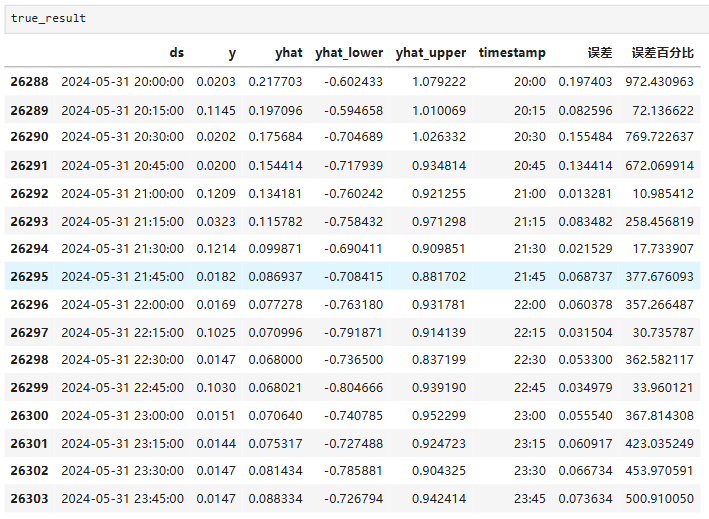【Hydro】水文模型比较框架MARRMoT - 包含47个概念水文模型的Matlab代码
目录
- 说明
- 源代码
- 运行实例
- workflow_example_1.m
- workflow_example_2.m
- workflow_example_3.m
- workflow_example_4.m
- 测试
- 1、 结构体兼容性问题
- 2、append的兼容性问题
- 3、修改后的MARRMoT_model.m
说明
MARRMoT是一个新的水文模型比较框架,允许不同概念水文模型结构之间的客观比较。该框架为47个独特的模型结构提供了Matlab代码,所有模型结构的标准化参数范围以及每个模型的强大数值实现。该框架提供了大量的文档,用户手册和几个工作流脚本,给予如何使用该框架的例子。包括以下模型:
- FLEX-Topo
- IHACRES
- GR4J
- TOPMODEL
- SIMHYD
- VIC
- LASCAM
- TCM
- TANK
- XINANJIANG
- HYMOD
- SACRAMENTO
- MODHYDROLOG
- HBV-96
- MCRM
- SMAR
- NAM
- HYCYMODEL
- GSM-SOCONT
- ECHO
- PRMS
- CLASSIC
- IHM19
MARRMoT框架中的模型期望接近它们所基于的原始模型,但差异是不可避免的。在许多情况下,一个模型存在多个版本,但这些版本并不总是很容易区分的。存在一定程度的模型名称相等性,其中单个名称用来指代同一基模型的各种不同版本。一个很好的例子是TOPMODEL,其中许多变体存在于基于地形指数的最初概念之上。MARRMoT模型往往基于任何给定模型的旧出版物,而不是新出版物(以接近原作者的“预期”模型),但我们的选择是务实的,以实现MARRMoT中可用通量和模型结构的更大多样性。每个模型的描述列出了构成该模型MARRMoT版本基础的论文。
MARRMoT框架以模块化的方式设置,并以单个的通量文件作为基本的构建块。模型文件通过指定每个模型的内部工作方式来为其定义一类对象,而超类文件则定义了所有模型通用的所有过程。图1显示了工具箱结构的示意图概述。

源代码
降雨径流模型的模块化评估
运行实例
workflow_example_1.m
这个示例工作流程包含一个单一模型对单一集水区的应用示例。它包括5个步骤:
- 数据准备
- 模型选择和设置(设置参数)
- 模型求解器设置
- 模型生成和设置
- 模型运行
- 输出可视化

workflow_example_2.m
这个示例工作流程包含一个单一模型对单一集水区的应用示例。它包括5个步骤:
- 数据准备
- 模型选择和设置(默认参数)
- 模型求解器设置
- 模型生成和设置
- 模型运行
- 输出可视化

workflow_example_3.m
这个示例工作流程包含多个模型对单一集水区的应用示例。它包括6个步骤:
- 数据准备
- 模型选择和设置
- 模型求解器设置
对于列表中的每个模型:
5. 模型生成和设置
6. 模型运行
7. 输出可视化

workflow_example_4.m
这个示例工作流程包含了一个单一模型对单一集水区的校准应用示例。它包括7个步骤:
- 数据准备
- 模型选择和设置
- 模型求解器设置和时间步进方案
- 校准设置
- 模型校准
- 校准结果评估
- 输出可视化
测试
原始代码根据作者描述,在MATLAB版本9.11.0.1873467(R2021b)上开发的,并使用Octave 6.4.0进行了测试。笔者使用R2017a时,出现了几个可能是兼容性的问题。
1、 结构体兼容性问题
动态字段或属性名称必须为字符矢量。
 将将string转换为char,即可使用结构体动态赋值。
将将string转换为char,即可使用结构体动态赋值。
2、append的兼容性问题
错误使用 append (line 38)
Wrong number of input arguments for obsolete matrix-based syntax.

在MATLAB中,append函数是用来将矩阵或数组的元素添加到另一个矩阵或数组的末尾。如果你想将字符串连接到另一个字符串,可以使用cat函数或者简单的加号+。
3、修改后的MARRMoT_model.m
classdef MARRMoT_model < handle
% Superclass for all MARRMoT models% Copyright (C) 2019, 2021 Wouter J.M. Knoben, Luca Trotter
% This file is part of the Modular Assessment of Rainfall-Runoff Models
% Toolbox (MARRMoT).
% MARRMoT is a free software (GNU GPL v3) and distributed WITHOUT ANY
% WARRANTY. See <https://www.gnu.org/licenses/> for details.properties% attribute to store whether we are running MATLAB or OctaveisOctave % 1 if we're on Octave, 0 if MATLAB% static attributes, set for each models in the model definitionnumStores % number of model storesnumFluxes % number of model fluxesnumParams % number of model parametersparRanges % default parameter rangesJacobPattern % pattern of the Jacobian matrix of model store ODEsStoreNames % Names for the storesFluxNames % Names for the fluxesFluxGroups % Grouping of fluxes (useful for water balance and output)StoreSigns % Signs to give to stores (-1 is a deficit store), assumes all 1 if not given% attributes set at the beginning of the simulation% directly by the usertheta % Set of parametersdelta_t % time stepS0 % initial store valuesinput_climate % vector of input climatesolver_opts % options for numerical solving of ODEs% automatically, based on parameter setstore_min % store minimum valuesstore_max % store maximum values% attributes created and updated automatically throughout a% simulationt % current timestepfluxes % vector of all fluxesstores % vector of all storesuhs % unit hydrographs and still-to-flow fluxessolver_data % step-by-step info of solver used and residualsstatus % 0 = model created, 1 = simulation endedendmethods% This will run as soon as any model object is createdfunction [obj] = MARRMoT_model()obj.isOctave = exist('OCTAVE_VERSION', 'builtin')~=0;% if running in Octave, load the optim packageif obj.isOctave; pkg load optim; endendfunction [] = set.isOctave(obj, value); obj.isOctave = value; end% Set methods with checks on inputs for attributes set by the user:function [] = set.delta_t(obj, value)if numel(value) == 1 || isempty(value)obj.delta_t = value;obj.reset();elseerror('delta_t must be a scalar')endendfunction [] = set.theta(obj, value)if numel(value) == obj.numParams || isempty(value)obj.theta = value(:);obj.reset();elseerror(['theta must have ' int2str(obj.numParams) ' elements'])endendfunction [] = set.input_climate(obj, value)if isstruct(value)if isfield(value, 'delta_t')obj.delta_t = value.delta_t;elseif isempty(obj.delta_t)error(['delta_t is not in input climate struct: '...'add it with obj.delta_t = delta_t'])endif isfield(value, {'precip' 'pet' 'temp'})P = value.precip/obj.delta_t;Ea = value.pet/obj.delta_t;T = value.temp/obj.delta_t;obj.input_climate = [P(:) Ea(:) T(:)];obj.reset();elseerror(['Input climate struct must contain fields: '...'precip, pet, temp']);endelseif isnumeric(value)if size(value,2) || isempty(value)obj.input_climate = value;obj.reset();elseerror(['Input climate must have 3 columns: '...'precip, pet, temp']);endelseerror(['Input climate must either be a struct or '...'a numeric array of 3 columns']);endendfunction [] = set.S0(obj, value)if numel(value) == obj.numStores || isempty(value)obj.S0 = value(:);obj.reset();elseerror(['S0 must have ' int2str(obj.numStores) ' elements'])endendfunction [] = set.solver_opts(obj, value)% add options to default onesobj.solver_opts = obj.add_to_def_opts(value);obj.reset();end% INIT_ runs before each model run to initialise store limits,% auxiliary parameters etc. it calls INIT which is model specificfunction obj = init_(obj)% min and max of storesobj.store_min = zeros(obj.numStores,1);obj.store_max = inf(obj.numStores,1);% empty vectors of fluxes and storest_end = size(obj.input_climate, 1);obj.stores = zeros(t_end, obj.numStores);obj.fluxes = zeros(t_end, obj.numFluxes);% empty struct with the solver dataobj.solver_data.resnorm = zeros(t_end,1);obj.solver_data.solver = zeros(t_end,1);if(~obj.isOctave); obj.solver_data.solver = categorical(obj.solver_data.solver); end;obj.solver_data.iter = zeros(t_end,1);% model specific initialisationobj.init();end% RESET is called any time that a user-specified input is changed% (t, delta_t, input_climate, S0, solver_options) and resets any% previous simulation ran on the object.% This is to prevent human error in analysing results.function obj = reset(obj)obj.t = []; % current timestepobj.fluxes = []; % vector of all fluxesobj.stores = []; % vector of all storesobj.uhs = []; % unit hydrographs and still-to-flow fluxesobj.solver_data = []; % step-by-step info of solver used and residualsobj.status = 0; % 0 = model created, 1 = simulation endedend% ODE approximation with Implicit Euler time-stepping schemefunction err = ODE_approx_IE(obj, S)S = S(:);delta_S = obj.model_fun(S);if obj.t == 1; Sold = obj.S0(:);else; Sold = obj.stores(obj.t-1,:)';enderr = (S - Sold)/obj.delta_t - delta_S';end % SOLVE_STORES solves the stores ODEs function [Snew, resnorm, solver, iter] = solve_stores(obj, Sold)solver_opts = obj.solver_opts;% This reduces the tolerance to a fraction of the smallest store,% if stores are very small, with 1E-6 as minimum% (if resnorm_tolerance is 0.1 as default)resnorm_tolerance = solver_opts.resnorm_tolerance * min(min(abs(Sold)) + 1E-5, 1);% create vectors for each of the three solutions (NewtonRaphon,% fsolve and lsqnonlin), this way if all three run it takes the% best at the end and not the last one.Snew_v = zeros(3, obj.numStores);resnorm_v = Inf(3, 1);iter_v = ones(3,1);% first try to solve the ODEs using NewtonRaphsonif(~obj.isOctave) %if MATLAB[tmp_Snew, tmp_fval] = ...NewtonRaphson(@obj.ODE_approx_IE,...Sold,...solver_opts.NewtonRaphson);else % if Octave[tmp_Snew, tmp_fval] = ...NewtonRaphson_octave(@obj.ODE_approx_IE,...Sold,...solver_opts.NewtonRaphson);endtmp_resnorm = sum(tmp_fval.^2);Snew_v(1,:) = tmp_Snew;resnorm_v(1) = tmp_resnorm;% if NewtonRaphson doesn't find a good enough solution, run FSOLVEif tmp_resnorm > resnorm_tolerance [tmp_Snew,tmp_fval,~,tmp_iter] = ...obj.rerunSolver('fsolve', ... tmp_Snew, ... % recent estimatesSold); % storages at previous time steptmp_resnorm = sum(tmp_fval.^2);Snew_v(2,:) = tmp_Snew;resnorm_v(2) = tmp_resnorm;iter_v(2) = tmp_iter;% if FSOLVE doesn't find a good enough solution, run LSQNONLINif tmp_resnorm > resnorm_tolerance[tmp_Snew,tmp_fval,~,tmp_iter] = ...obj.rerunSolver('lsqnonlin', ... tmp_Snew, ... % recent estimatesSold); % storages at previous time steptmp_resnorm = sum(tmp_fval.^2);Snew_v(3,:) = tmp_Snew;resnorm_v(3) = tmp_resnorm;iter_v(3) = tmp_iter;endend% get the best solution[resnorm, solver_id] = min(resnorm_v);Snew = Snew_v(solver_id,:);iter = iter_v(solver_id);if(obj.isOctave)solver = solver_id;elsesolvers = ["NewtonRaphson", "fsolve", "lsqnonlin"];solver = solvers(solver_id);endend% RERUNSOLVER Restarts a root-finding solver with different % starting pointsfunction [ Snew, fval, stopflag, stopiter ] = ...rerunSolver( obj,...solverName,...initGuess,...Sold)% get out useful attributessolver_opts = obj.solver_opts.(solverName);solve_fun = @obj.ODE_approx_IE;max_iter = obj.solver_opts.resnorm_maxiter;resnorm_tolerance = obj.solver_opts.resnorm_tolerance * min(min(abs(Sold)) + 1E-5, 1);% Initialize iteration counter, sampling checker and find number of ODEsiter = 1;resnorm = resnorm_tolerance + 1; % i.e. greater than the required accuracynumStores = obj.numStores;stopflag = 1; % normal function run% Initialise vector of Snew and fval for each iteration, this way you can% keep the best one, not the last one.Snew_v = zeros(numStores, max_iter);fval_v = inf(numStores,max_iter);resnorm_v = inf(1, max_iter);Snew = -1 * ones(numStores, 1);% Start the re-sampling% Re-sampling uses different starting points for the solver to see if% solution accuracy improves. Starting points are alternated as follows:% 1. location where the solver got stuck% 2. storages at previous time step% 3. minimum values% 4. maximum values% 5. randomized values close to solution of previous time stepswhile resnorm > resnorm_tolerance% Select the starting pointsswitch itercase 1x0 = initGuess(:); % 1. Location where solver got stuckcase 2x0 = Sold(:); % 2. Stores at t-1case 3x0 = max(-2*10^4.*ones(numStores,1),obj.store_min(:)); % 3. Low values (store minima or -2E4)case 4x0 = min(2*10^4.*ones(numStores,1),obj.store_max(:)); % 4. High values (store maxima or 2E4)otherwisex0 = max(zeros(numStores,1),...Sold(:)+randn(numStores,1).*Sold(:)/10); % 5. Randomized values close to starting locationend% Re-run the solverif strcmpi(solverName, 'fsolve')[Snew_v(:,iter), fval_v(:,iter), stopflag] = ...fsolve(solve_fun, x0, solver_opts);elseif strcmpi(solverName, 'lsqnonlin')[Snew_v(:,iter), ~, fval_v(:,iter), stopflag] = ...lsqnonlin(solve_fun, x0, obj.store_min, [], solver_opts);elseerror('Only fsolve and lsqnonlin are supported');endresnorm_v(iter) = sum(fval_v(:,iter).^2);[resnorm,stopiter] = min(resnorm_v);fval = fval_v(:,stopiter);Snew = Snew_v(:,stopiter);% Break out of the loop of iterations exceed the specified maximumif iter >= max_iterstopflag = 0; % function stopped due to iteration countbreakend% Increase the iteration counteriter = iter + 1;endend% RUN runs the model with a given climate input, initial stores,% parameter set and solver settings.% none of the arguments are needed, they can be set beforehand with% obj.theta = theta; obj.input_climate = input_climate; etc.% then simply obj.run() without arguments.function [] = run(obj,...input_climate,... S0,...theta,...solver_opts)if nargin > 4 && ~isempty(solver_opts)obj.solver_opts = solver_opts;endif nargin > 3 && ~isempty(theta)obj.theta = theta;endif nargin > 2 && ~isempty(S0)obj.S0 = S0;endif nargin > 1 && ~isempty(input_climate)obj.input_climate = input_climate;end% run INIT_ method, this will calculate all auxiliary parameters% and set up routing vectors and store limitsobj.init_();t_end = size(obj.input_climate, 1);for t = 1:t_endobj.t = t;if t == 1; Sold = obj.S0(:);else; Sold = obj.stores(t-1,:)';end[Snew,resnorm,solver,iter] = obj.solve_stores(Sold);[dS, f] = obj.model_fun(Snew);obj.fluxes(t,:) = f * obj.delta_t;obj.stores(t,:) = Sold + dS' * obj.delta_t;obj.solver_data.resnorm(t) = resnorm;obj.solver_data.solver(t) = solver;obj.solver_data.iter(t) = iter;obj.step();endobj.status = 1;end% GET_OUTPUT runs the model exactly like RUN, but output is% consistent with current MARRMoTfunction [fluxOutput,...fluxInternal,...storeInternal,...waterBalance,...solverSteps] = get_output(obj,...varargin)if nargin > 1 || isempty(obj.status) || obj.status == 0 obj.run(varargin{:});end% --- Fluxes leaving the model --- fg = fieldnames(obj.FluxGroups);fluxOutput = struct();for k=1:numel(fg)idx = abs(obj.FluxGroups.(fg{k}));signs = sign(obj.FluxGroups.(fg{k}));fluxOutput.(fg{k}) = sum(signs.*obj.fluxes(:,idx),2);end% --- Fluxes internal to the model ---fluxInternal = struct;for i = 1:obj.numFluxesfluxInternal.(char(obj.FluxNames{i})) = obj.fluxes(:,i)';end% --- Stores ---storeInternal = struct;for i = 1:obj.numStoresstoreInternal.(char(obj.StoreNames{i})) = obj.stores(:,i)';end% --- Water balance, if requested ---if nargout >= 4waterBalance = obj.check_waterbalance();end% --- step-by-step data of the solver, if requested ---if nargout == 5solverSteps = obj.solver_data;endend% CHECK_WATERBALANCE returns the waterbalance% like in MARRMoT1, it will print to screenfunction [out] = check_waterbalance(obj, varargin)if nargin > 1 || isempty(obj.status) || obj.status == 0 obj.run(varargin{:});end% Get variablesP = obj.input_climate(:,1);fg = fieldnames(obj.FluxGroups);OutFluxes = zeros(1,numel(fg));for k=1:numel(fg) % cumulative of each flow leaving the modelidx = abs(obj.FluxGroups.(fg{k}));signs = sign(obj.FluxGroups.(fg{k}));OutFluxes(k) = sum(sum(signs.*obj.fluxes(:,idx), 1),2);endif isempty(obj.StoreSigns); obj.StoreSigns = repelem(1, obj.numStores); enddS = obj.StoreSigns(:) .* (obj.stores(end,:)' - obj.S0); % difference of final and initial storage for each storeif isempty(obj.uhs); obj.uhs = {}; endR = cellfun(@(uh) sum(uh(2,:)), obj.uhs); % cumulative of each flows still to be routed% calculate water balanceout = sum(P) - ... % input from precipitationsum(OutFluxes) - ... % all fluxes leaving the model (some may be entering, but they should have a negative sign)sum(dS) - ... % all differences in storagesum(R); % all flows still being routeddisp(['Total P = ',num2str(sum(P)),' mm.'])for k = 1:numel(fg)disp(['Total ',char(fg(k)),' = ',...num2str(-OutFluxes(k)),' mm.'])endfor s = 1:obj.numStoresif obj.StoreSigns(s) == -1ending=' (deficit store).';elseending='.';enddisp(['Delta S',num2str(s),' = ',...num2str(-dS(s)),' mm',ending])endif ~isempty(R)disp(['On route = ',num2str(-sum(R)),' mm.'])enddisp('-------------')disp(['Water balance = ', num2str(out), ' mm.'])end% GET_STREAMFLOW only returns the streamflow, runs the model if it% hadn't run already.function Q = get_streamflow(obj, varargin)if nargin > 1 || isempty(obj.status) || obj.status == 0obj.run(varargin{:});endQ = sum(obj.fluxes(:,obj.FluxGroups.Q),2);end% CALIBRATE uses the chosen algorithm to find the optimal parameter% set, given model inputs, objective function and observed streamflow.% the function chosen in algorithm should have the same inputs and% outputs as MATLAB's fminsearch.function [par_opt,... % optimal parameter setof_cal,... % value of objective function at par_optstopflag,... % flag indicating reason the algorithm stoppedoutput] = ... % output, see fminsearch for detailcalibrate(obj,...Q_obs,... % observed streamflowcal_idx,... % timesteps to use for model calibrationoptim_fun,... % function to use for optimisation (must have same structure as fminsearch)par_ini,... % initial parameter estimatesoptim_opts,... % options to optim_funof_name,... % name of objective function to useinverse_flag,... % should the OF be inversed?display,... % should I display information about the calibration?varargin) % additional arguments to the objective functionif isempty(obj.input_climate) || isempty(obj.delta_t) ||...isempty(obj.S0) || isempty(obj.solver_opts)error(['input_climate, delta_t, S0 and solver_opts '...'attributes must be specified before calling '...'calibrate.']);end% if the list of timesteps to use for calibration is empty,% use all steps if isempty(cal_idx)cal_idx = 1:length(Q_obs);end% use display by defaultif isempty(display)display = true;end% use the data from the start to the last value of cal_idx to% run the simulationif islogical(cal_idx); cal_idx = find(cal_idx); endinput_climate_all = obj.input_climate;obj.input_climate = input_climate_all(1:max(cal_idx),:);Q_obs = Q_obs(1:max(cal_idx));% if the initial parameter set isn't set, start from mean% values of parameter rangeif isempty(par_ini)par_ini = mean(obj.parRanges,2);end% helper function to calculate fitness given a set of% parametersfunction fitness = fitness_fun(par)Q_sim = obj.get_streamflow([],[],par);fitness = (-1)^inverse_flag*feval(of_name, Q_obs, Q_sim, cal_idx, varargin{:});end% display some useful things for the user to make sure they% used the right settingsif displaydisp('---')disp(['Starting calibration of model ' class(obj) '.'])disp(['Simulation will run for timesteps 1-' num2str(max(cal_idx)) '.'])% this is a bit ugly, but it formats the list of cal_idx in% a pretty and concise waycal_idx = sort(cal_idx);i = 1;previous = cal_idx(i);cal_idx_str = num2str(previous); while i < numel(cal_idx) i = i + 1; if cal_idx(i)-previous == 1 i = find(diff(cal_idx(i:end)) ~= 1, 1) + i - 1; if isempty(i); i = numel(cal_idx); end previous = cal_idx(i); cal_idx_str = [cal_idx_str '-', num2str(previous)]; else previous = cal_idx(i); cal_idx_str = [cal_idx_str ', ', num2str(previous)]; end enddisp(['Objective function ' of_name ' will be calculated in time steps ' cal_idx_str '.'])disp(['The optimiser ' optim_fun ' will be used to optimise the objective function.'])disp(['Options passed to the optimiser:'])disp(optim_opts)disp('All other options are left to their default,')disp('check the source code of the optimiser to find these default values.')disp('---')end[par_opt,... % optimal parameter set at the end of the optimisationof_cal,... % value of the objective function at par_optstopflag,... % flag indicating reason the algorithm stoppedoutput] = ... % output, see fminsearch for detailfeval(optim_fun,... % run the optimisation algorithm chosen@fitness_fun,... % function to optimise is the fitness functionpar_ini,... % initial parameter setoptim_opts); % optimiser options% if of_cal was inverted, invert it back before returningof_cal = (-1)^inverse_flag * of_cal;% reset the whole input climate as it was before the% calibrationobj.input_climate = input_climate_all;end% function to return default solver optionsfunction solver_opts = default_solver_opts(obj)solver_opts.resnorm_tolerance = 0.1; % Root-finding convergence tolerancesolver_opts.resnorm_maxiter = 6; % Maximum number of re-runs used in rerunSolversolver_opts.NewtonRaphson = optimset('MaxIter', obj.numStores * 10);% if MATLABif(~obj.isOctave)solver_opts.fsolve = optimoptions('fsolve',...'Display','none',... % Disable display settings'JacobPattern', obj.JacobPattern);solver_opts.lsqnonlin = optimoptions('lsqnonlin',... % lsqnonlin settings for cases where fsolve fails'Display','none',...'JacobPattern',obj.JacobPattern,...'MaxFunEvals',1000);else % if OCTAVEsolver_opts.fsolve = optimset('Display', 'off');solver_opts.lsqnonlin = optimset('Display', 'off', 'MaxFunEvals',1000);endend% function to add new solver opts to the default onesfunction solver_opts = add_to_def_opts(obj, opts)def_opts = obj.default_solver_opts(); if nargin == 1 || isempty(opts)solver_opts = def_opts;elsedef_fields = fieldnames(def_opts);% for each field in the default options (5 at the moment)for k = 1:length(def_fields)field = def_fields{k};% if the field is not provided, use the default oneif ~isfield(opts, field) || isempty(opts.(field))solver_opts.(field) = def_opts.(field);% if the field is provided, and the dafault is a struct,% add the new values to the default structelseif isstruct(def_opts.(field))solver_opts.(field) = optimset(def_opts.(field),opts.(field));% if the field is provided, and the dafault is not a struct,% discard the default and use the new valueelsesolver_opts.(field) = opts.(field);endendend endend
end
相关文章:

【Hydro】水文模型比较框架MARRMoT - 包含47个概念水文模型的Matlab代码
目录 说明源代码运行实例workflow_example_1.mworkflow_example_2.mworkflow_example_3.mworkflow_example_4.m 测试1、 结构体兼容性问题2、append的兼容性问题3、修改后的MARRMoT_model.m 说明 MARRMoT是一个新的水文模型比较框架,允许不同概念水文模型结构之间的…...

Android Studio(2022.3.1)设置阿里云源-新旧版本
新版本 #settings.gradle.ktsmaven { url uri("https://maven.aliyun.com/repository/public/") }maven { url uri("https://maven.aliyun.com/repository/google/") }maven { url uri("https://maven.aliyun.com/repository/jcenter/") }ma…...

SOLIDWORKS 2024新功能 3D CAD三维机械设计10大新功能
SOLIDWORKS 2024新增功能 - 3D CAD三维机械设计 10大新增功能 1. 先前版本的兼容性 •利用您订阅的 SOLIDWORKS,可将您的 SOLIDWORKS 设计作品保存为旧版本,与使用旧版本 SOLIDWORKS 的供应商无缝协作。 •可将零件、装配体和工程图保存为最新版本…...

第十三章:L2JMobius学习 – 玩家攻击怪物
本章节,我们学习一下玩家周边怪物的刷新。在上一章节中,我们提过这个事情。当玩家移动完毕之后,会显示周围的游戏对象,其中就包括NPC怪物。当然,玩家“孵化”自己(调用spawnMe方法)的时候&#…...

Module not found: Error: Can‘t resolve ‘core-js/modules/es.promise.js‘
1.遇到的问题 具体错误: ERROR in ./src/js/index.js 1:0-48 产环境配置15js兼容性处理srcjsERROR in ./src/js/index.js 2:0-39 Module not found: Error: Cant resolve core-js/modules/es.promise.js in D:DesktopMy FilesRecentlyStudyWebPackdemo3.webpack生…...

09-React路由使用(React Router 6)
9-React Router 6的使用 1.概述 React Router 以三个不同的包发布到 npm 上,它们分别为: react-router: 路由的核心库,提供了很多的:组件、钩子。react-router-dom: 包含react-router所有内容,并添加一些专门用于 DOM …...

Linux上常用网络相关命令
1. ifconfig: - 显示所有网络接口的配置信息:ifconfig - 显示特定网络接口(例如eth0)的配置信息:ifconfig eth0 2. ip: - 显示网络接口的配置信息:ip addr show - 显示路由表&…...

contenteditable实现文本内容确认提示
功能需求: 列表进行批量查询,需要对输入的值做提交校验,分三种情况: 若部分字符串有误,部分字符串需要变更字体颜色做提示,再次点击确认则对部分正确数据执行批量查询 若全部数据有误则变更字体颜色做提示&…...

vue2vue3--render函数(h)
目录 h函数 方法1. 在Options API中的使用 方法2. 在Composition API中的使用 Vue 2中的渲染函数 基础 vue2 vue3 vue3--声明渲染函数 节点、树以及虚拟 DOM 虚拟 DOM createElement 参数 深入数据对象 约束 vue2 vue3 使用 JavaScript 代替模板功能…...

网络协议--动态选路协议
10.1 引言 在前面各章中,我们讨论了静态选路。在配置接口时,以默认方式生成路由表项(对于直接连接的接口),并通过route命令增加表项(通常从系统自引导程序文件),或是通过ICMP重定向…...

30天精通Nodejs--第一天:入门指南
介绍 看一下下面这段比较官方的介绍: Node.js是一个基于Chrome V8引擎的JavaScript运行时环境,可以用于构建可扩展的网络应用程序。它的特点在于能够使JavaScript在服务器端运行,能够利用JavaScript的强大功能来处理服务器端的事务。 Nodejs的特点 高效的异步编程:Node.…...

C# ref用法,实现引用传递(地址传递)
前言: 今天这篇文章我们简单学习一下C# ref的用法,在看别人的代码不至于看不懂逻辑,虽然这是一个比较简单的知识点,但是还是值得我们去学习一下关于这个知识点一些概念,我们知道在C# 中我们的函数参数,一般…...

微信小程序数据交互------WXS的使用
🎬 艳艳耶✌️:个人主页 🔥 个人专栏 :《Spring与Mybatis集成整合》《Vue.js使用》 ⛺️ 越努力 ,越幸运。 1.数据库连接 数据表结构: 数据测式: 2.后台配置 pom.xml <?xml version&quo…...

【数据结构】String类对象的创建与字符串常量池的“神秘交易”
作者主页:paper jie_博客 本文作者:大家好,我是paper jie,感谢你阅读本文,欢迎一建三连哦。 本文录入于《JAVA数据结构》专栏,本专栏是针对于大学生,编程小白精心打造的。笔者用重金(时间和精力…...

搞个微信小程序002:个人信息
新建一个用于,和001中一样,然后,就改掉两个文件: index.wxml: <view><!-- 头像区域 --><view class"top"><view class"user-img"><image src"/images/tx.png"><…...

.obj模型文件(带材质和纹理)合并的基本思路
1、将v开头的顶点信息依次拷贝到合并新.obj中 2、将vt纹理坐标依次拷贝到合并新.obj中 3、f(面)的合并 步骤: (1)第一个obj文件的f(面)原封不动拷进新.obj中 (2)第二个…...

es : java 查询
1. POM 配置 <dependency><groupId>org.elasticsearch.client</groupId><artifactId>elasticsearch-rest-high-level-client</artifactId><version>7.6.2</version></dependency> 2. 建立ES集群连接 RestHighLevelClient cli…...

MySQL MVCC机制探秘:数据一致性与并发处理的完美结合,助你成为数据库高手
一、前言 在分析 MVCC 的原理之前,我们先回顾一下 MySQL 的一些内容以及关于 MVCC 的一些简单介绍。(注:下面没有特别说明默认 MySQL 的引擎为 InnoDB ) 1.1 数据库的并发场景 数据库并发场景有三种,分别是: 读-读…...

5分钟搞懂分布式可观测性
可观测性是大规模分布式(微服务)系统的必要组件,没有可观测系统的支持,监控和调试分布式系统将是一场灾难。本文讨论了可观测系统的主要功能,并基于流行的开源工具搭建了一套可观测系统架构。原文: A Primer on Distributed Systems Observab…...

桥梁结构健康监测系统落地方案
桥梁结构健康监测的意义是多方面的。首先,它可以实时采集桥梁的结构数据,并对其进行处理和分析,以确定结构损伤的位置、评估桥梁的健康状况,并预测承载力的发展趋势。这有助于及时发现桥梁的结构问题和潜在风险,为采取…...

vscode里如何用git
打开vs终端执行如下: 1 初始化 Git 仓库(如果尚未初始化) git init 2 添加文件到 Git 仓库 git add . 3 使用 git commit 命令来提交你的更改。确保在提交时加上一个有用的消息。 git commit -m "备注信息" 4 …...

React第五十七节 Router中RouterProvider使用详解及注意事项
前言 在 React Router v6.4 中,RouterProvider 是一个核心组件,用于提供基于数据路由(data routers)的新型路由方案。 它替代了传统的 <BrowserRouter>,支持更强大的数据加载和操作功能(如 loader 和…...

MFC内存泄露
1、泄露代码示例 void X::SetApplicationBtn() {CMFCRibbonApplicationButton* pBtn GetApplicationButton();// 获取 Ribbon Bar 指针// 创建自定义按钮CCustomRibbonAppButton* pCustomButton new CCustomRibbonAppButton();pCustomButton->SetImage(IDB_BITMAP_Jdp26)…...

【HarmonyOS 5.0】DevEco Testing:鸿蒙应用质量保障的终极武器
——全方位测试解决方案与代码实战 一、工具定位与核心能力 DevEco Testing是HarmonyOS官方推出的一体化测试平台,覆盖应用全生命周期测试需求,主要提供五大核心能力: 测试类型检测目标关键指标功能体验基…...

Docker 运行 Kafka 带 SASL 认证教程
Docker 运行 Kafka 带 SASL 认证教程 Docker 运行 Kafka 带 SASL 认证教程一、说明二、环境准备三、编写 Docker Compose 和 jaas文件docker-compose.yml代码说明:server_jaas.conf 四、启动服务五、验证服务六、连接kafka服务七、总结 Docker 运行 Kafka 带 SASL 认…...

可靠性+灵活性:电力载波技术在楼宇自控中的核心价值
可靠性灵活性:电力载波技术在楼宇自控中的核心价值 在智能楼宇的自动化控制中,电力载波技术(PLC)凭借其独特的优势,正成为构建高效、稳定、灵活系统的核心解决方案。它利用现有电力线路传输数据,无需额外布…...

Python实现prophet 理论及参数优化
文章目录 Prophet理论及模型参数介绍Python代码完整实现prophet 添加外部数据进行模型优化 之前初步学习prophet的时候,写过一篇简单实现,后期随着对该模型的深入研究,本次记录涉及到prophet 的公式以及参数调优,从公式可以更直观…...

数据链路层的主要功能是什么
数据链路层(OSI模型第2层)的核心功能是在相邻网络节点(如交换机、主机)间提供可靠的数据帧传输服务,主要职责包括: 🔑 核心功能详解: 帧封装与解封装 封装: 将网络层下发…...
)
GitHub 趋势日报 (2025年06月08日)
📊 由 TrendForge 系统生成 | 🌐 https://trendforge.devlive.org/ 🌐 本日报中的项目描述已自动翻译为中文 📈 今日获星趋势图 今日获星趋势图 884 cognee 566 dify 414 HumanSystemOptimization 414 omni-tools 321 note-gen …...

实现弹窗随键盘上移居中
实现弹窗随键盘上移的核心思路 在Android中,可以通过监听键盘的显示和隐藏事件,动态调整弹窗的位置。关键点在于获取键盘高度,并计算剩余屏幕空间以重新定位弹窗。 // 在Activity或Fragment中设置键盘监听 val rootView findViewById<V…...
